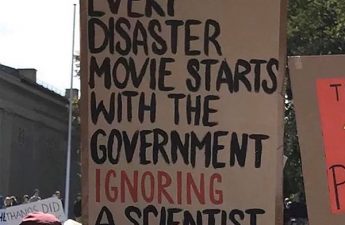What to look for when purchasing royalty free images online for marketing
There are several articles online that provide excellent information on how stock photos work and what the basic rules are in terms of pricing, licensing and so on. If you do a Google search for such information you will find what you need. This article is a focus on sizing as it has been one item I’ve seen neglected or ignored when making such purchases.
For the last 16 years I’ve been working mainly in large format design and output. IE: trade show displays, large banners and so on. In those years I’ve received thousands and thousands of designs from other companies or I’ve been supplied with elements to perform the design myself. However, one item that has consistently come up as being an issue is the stock photo and resolution.
Large format output (think a printed image that is 8ft tall by 20ft wide for example) requires very specific preparation in terms of file format and resolution. It’s one thing to take an image and print it on a half page magazine ad but completely another thing to try to use that same image as a 20ft backdrop at your trade show. So, when purchasing a stock image that your company will be using for multiple marketing purposes I always recommend buying the largest file size available.
Many stock photo sites exist today. In years past you were limited to just a handful of stock photo sources and the cost to purchase images was very high. However, back in the year 2000, a site called istockphoto changed everything. The concept was simple; rather than rely on huge corporate stock photo sites, istock sourced independent photographers and illustrators around the globe to sell their own designs at a fraction of the cost. The concept was a huge success and changed the entire industry. What used to cost you hundreds or thousands of dollars for a single image was now less than $50 or so. It wasn’t long before similar sites popped up and the large stock corporations could no longer ignore it (going so far as to purchase these sites but maintain their pricing while setting their original offers at a premium placement).
But enough of the history lesson. Back to getting that image you want. I suggested always buying the largest size available. The reason is that, though right now you may only be designing a brochure, you may want to expand your marketing in the future to something larger. And, if you only purchased a smaller image that met your original design intent, you are now left without a larger image to support larger output.
Granted, many sites today maintain a purchase history on your profile that allows you to go back a certain amount of time to fetch larger versions of the file you purchased. But, there are limits to how far back you can go and not every image supports this option since every image is essentially supplied by independent contractors. On a positive note though, most images purchased on sites like istockphoto (in the royalty free section) are the same price regardless of the size you want. So why not get the biggest one available so it is on file should you need it?
Another item to look for is orientation. As you search for that perfect photo (or illustration) keep in mind what you are using it for now as well as what you may want to use it for in the future. Many photos are supplied not only in different resolutions and sizes but also different orientations. You may need a vertical layout now but consider looking for the same photo in a horizontal orientation. Should that exist I recommend picking that up to while making the purchase (like Ferris Bueller said: if you have the means). Having multiple versions of the same photo/design concept on file allows a designer future layout options you perhaps didn’t consider. And, there isn’t always a guarantee that the photo you buy now will be available in the future. So grabbing what you may need for other designs at the original time of purchase is always a good idea.
As for resolution and size, as I mentioned earlier, you should seek out the biggest file you can. But not all images are prepared the same, nor do they come in all of the sizes possible. Since these popular low cost sites gain images from independent designers and photographers around the world, each works to their limitations or desires. What one photographer supplies in terms of sizing isn’t going to always match others. Generally I’ve always looked for images that come in sizes listed as XXL or bigger. Check the pixel count and resolution carefully and talk to your designer about what such images will scale to (a designer can do this easily in Photoshop to get a general idea). Illustrations won’t matter as they are vector files and can scale to any size (though be mindful about certain designs prepared in RGB that won’t properly convert to CMYK). Sometimes there are ways to reach out to the photographer to request larger versions of an image if they don’t currently exist on the site you are purchasing from. In those cases you can maybe get exactly what you want.
As for print quality, it comes down to the source file. Not all images are created equal. You may purchase two XXL images from two different sources and find that one will print perfectly at the size you want while the other is grainy or distorted. Each image comes from someone who prepares the files based on the limitations of their camera and their skill level as a photographer and digital artist. I’ve seen some files print at 20ft wide and look super high definition while others are very blotchy. It can be frustrating but luckily these low cost royalty free sites are exactly that; low cost. You can always get another image while not breaking the bank.
Regarding the resolution question when printing bigger images, you will probably still need a designer to perform some image correction. Taking an image up to 20ft wide requires special skills as well as some understanding of what you should expect. Trade show displays are normally viewed from about 8 to 12 feet away for a standard 10×10 booth. I’ve seen images that, if you stood directly next to the print of a trade show, are a bit low quality. However, from a distance as mentioned above, they appear normal. This is standard. And, an experienced designer that has a large format history will know the tricks to scale up the photo to what you need as long as the source file supports it. Also, the latest version of Photoshop now has built in tools for that exact purpose (you used to have to perform several steps independently over some time to get the same result).
So, go forth and get that big image! Even if it may be overkill now because you are only doing a web site or brochure, it may pay off down the road if your success now dictates using the image again in a larger fashion. Big is always better in this case.
Have questions or want to know more about me? Visit www.jacobnorris.com

